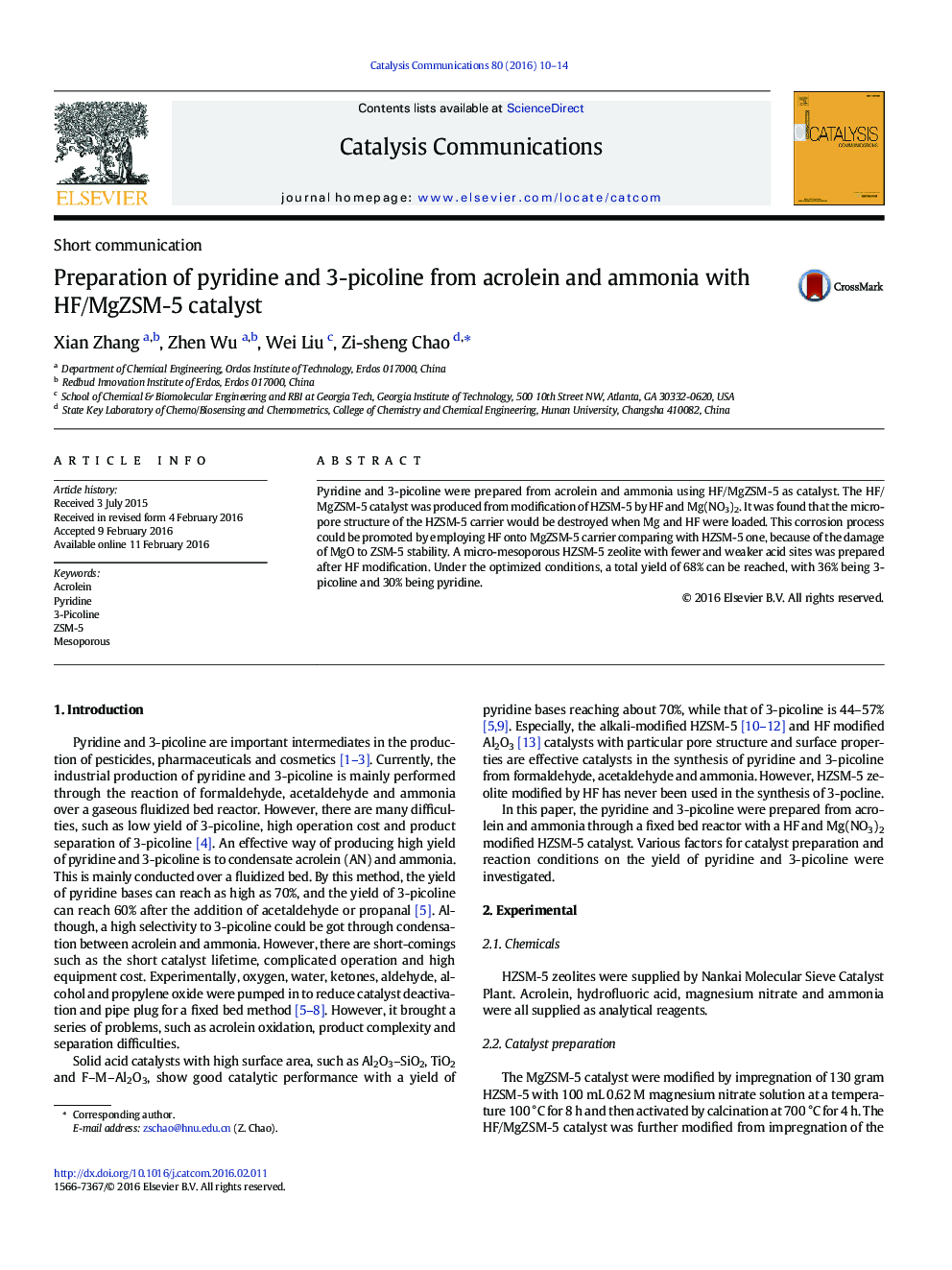| Article ID | Journal | Published Year | Pages | File Type |
|---|---|---|---|---|
| 49559 | Catalysis Communications | 2016 | 5 Pages |
•As high as 68% yield of pyridine and 3-picoline was achieved from concentration of acrolein and ammonia.•A HF/MgZSM-5 catalyst containing certain weaker and fewer acid sites after HF modification•The catalytic active centers might be fresh weak Lewis acid sites.•The bigger micropores and mesopores formed by HF modification prolonged catalyst lifetime.
Pyridine and 3-picoline were prepared from acrolein and ammonia using HF/MgZSM-5 as catalyst. The HF/MgZSM-5 catalyst was produced from modification of HZSM-5 by HF and Mg(NO3)2. It was found that the micropore structure of the HZSM-5 carrier would be destroyed when Mg and HF were loaded. This corrosion process could be promoted by employing HF onto MgZSM-5 carrier comparing with HZSM-5 one, because of the damage of MgO to ZSM-5 stability. A micro-mesoporous HZSM-5 zeolite with fewer and weaker acid sites was prepared after HF modification. Under the optimized conditions, a total yield of 68% can be reached, with 36% being 3-picoline and 30% being pyridine.
Graphical abstractThe HF/HZSM-5 and HF/MgZSM-5 catalysts, containing weaker and fewer Brösted and Lewis acid sites than HZSM-5 and MgZSM-5, have great help for the synthesis of pyridine and 3-picoline. The flat-adsorption of propylene imine on weak Lewis acid sites favors the production of 3-picoline. A strong adsorption leads to pyridine or polymer products. The bigger micropores and mesopores formed under further corrosion of HF solution have prolonged the catalyst lifetime.Figure optionsDownload full-size imageDownload as PowerPoint slide
